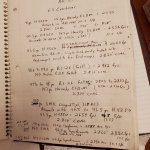What’s really gonna change is how well you’re able to shoot as the circular error probable (CEP) will be huge when you have significant changes in feet per second of the bullet as it travels down range.

en.wikipedia.org
For example, I just did some testing of some hornady 6 mm Creedmoor… And the outlier was well over 100 ft./s different from the average velocity.
View attachment 8525168
I’ve had a barrel speed up on me before after a few hundred rounds. That difference was only 75 ft./s, and at 700 yard my dope was so off that I was shooting over the target.
If my bullets were 75 ft./s off from one round to the next in either direction I would be missing the target and shooting the berm below the target or the bottom of an 800 yard target, because things were so wacky.
Typically, the two major things that affect that are charge weight being consistent, and the internal volume of your brass. This is why people go out and buy auto trickelers, and go out and buy Alpha, Peterson, Lapua, Norma, or other high-end brass.
(To be fair, you can go out and buy brass, such as Winchester, Remington, PMC, Federal, Hornady, S&B, Speer, Starline, etc., and sort the hell out of that brass by weight… thus lowering the overall SD.)
Also, part of the reason people clean the living hell out of their brass is so that they get all of the excess stuff off the brass so that when they sort it, they actually get accurate weight numbers…
If you have an SD somewhere in the 10 range, then you can shoot all day long and be pretty damn consistent hitting targets with the same point of impact through your scope. (Provided you’ve worked out your dope all the way out to your intended target)
I’ll add some pictures to this to make it more obvious.




